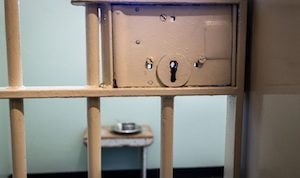Since 1993
Once Again, Constructive Possession Is Tough to Prove

How many drug possession cases in Orlando arise out of “constructive possession” situations? A lot. As I’ve stated many times, constructive possession cases are tough to prove. This is especially true when the drug possession arises out of a home search. Such was the case in Bennett v. State, 46 So.3d 1181 (Fla. 2nd DCA 2010). Corey Bennett was convicted of trafficking in cocaine, possession of marijuana, and possession of drug paraphernalia, all based on circumstantial evidence that he was in constructive possession of the contraband found in a home in which he occasionally stays.
It all started with Bennett being wanted on felony charges, although no arrest warrant had been issued. A Tampa police officer received a tip that Bennett could be found at a certain home address. This residence was comprised of a main house in the front, and a second dwelling, a cottage, in the rear. Bennett’s grandmother and other family members lived in the main residence, but the State presented no evidence to show who lived in the rear building, which was a small, one-bedroom studio with a living room, kitchen, and bath.
As the officer made his way to this residence, the tipster reported that Bennett had run to the rear cottage, so when the officer arrived, he proceeded to the cottage and knocked on the door. Receiving no response, he looked through a window into the bedroom and spotted Bennett peeking out from the adjoining bathroom. The officer ordered Bennett to come out, but he refused, so the officer came thru the window and arrested Bennett. In the living room and bedroom, the officer saw trafficking amounts of cocaine, and cannabis, out in plain view. No drugs were found on Bennett’s person.
Bennett was not shown to have physically possessed the drugs, they were on a table in the living room. When this happens, it becomes necessary for the state to prove Bennett had constructive possession of the cocaine and marijuana. At the risk of sounding like a broken record, let’s review what it takes to prove constructive possession, so as to remind you of how difficult it is to prove constructive drug possession.
Basically, the State must show beyond a reasonable doubt that the defendant knew of the presence of the contraband and that he had the ability to exercise dominion and control over it. (“Constructive possession exists where the accused does not have physical possession of the contraband but knows of its presence on or about the premises and can maintain dominion and control over it.”) (citing Brown v. State, 428 So.2d 250, 252 (Fla.1983)).
Often (as was the case here), the problem with proving constructive possession is the “dominion and control” element. It’s true that the jury could reasonably conclude that Bennett knew about the cocaine and cannabis in the living room because it was in plain view. But this is why constructive possession is sooooo hard to prove–drugs in plain view are not sufficient to prove dominion and control. To satisfy this element, the surrounding circumstances must support the inference of ” ‘a conscious and substantial possession by the accused, as distinguished from a mere involuntary or superficial possession.’ ” Jackson, 995 So.2d at 539 (quoting Reynolds v. State, 92 Fla. 1038, 111 So. 285, 286). Mere proximity to contraband is not enough. Isaac v. State, 730 So.2d 757, 758 (Fla. 2d DCA 1999). Therefore, the fact that cocaine and marijuana was in Bennett’s plain view does not support an inference he had control over it unless the he had control over the premises. Sundin, 27 So.3d at 676-77 (rejecting any inference of control over glass pipe in plain view when evidence showed that defendant was only visitor to hotel room and not occupant of room).
The appeals court overturned Bennett’s convictions for trafficking and possession, in part because the evidence failed to show that Bennett had control over the premises. There was no evidence to prove that the cottage was Bennett’s residence, and Bennett’s statement to the arresting officer that he sometimes stayed at the cottage was not enough. At most, the evidence proved that Bennett was a visitor.
[8] Because Bennett’s dominion and control of the contraband could not be inferred from his control of the premises, nor from the location of the drugs in plain view, the State was obliged to prove this element by independent evidence. See Sundin, 27 So.3d at 677; see also J.S.M. v. State, 944 So.2d 1143 (Fla. 2d DCA 2006). So, what kind of independent evidence would prove dominion and control? The court provided a few examples, such as incriminating statements, eyewitness testimony , or scientific evidence like fingerprints, linking him to the drugs.








